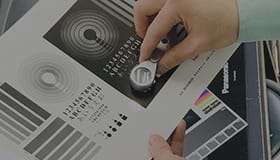Film Insert Molding (FIM/IMD)
-
What is the meaning of FIM/IMD?
-
The abbreviations, FIM and IMD, stand for Film Insert Molding and In-Mold Decoration. For these methods, the printed film is set into the mold and molded with molding resin as the finished product.
We recommend reading the FIM/IMD technology White Paper:
(1) FIM/IMD – 3 Process stages & Benefits
(2) FIM/IMD – Screen printing process –
(3) FIM/IMD – Forming process –
(Final) FIM/IMD – Injection process –We recommend reading the following reports:
Environmentally Friendly FIM/IMD Ink and Binder
IMB-HF006 Binder (Halogen Free, Environmentally Friendly Binder for IMD/FIM)
IPX-HF Screen Ink (2 Pack Halogen Free Environmentally Friendly Ink for IMD/FIM)
2 Pack Ink for FIM/IMD Applications
Adding High Value to Products with FIM/IMD (Part 3)
Adding High Value to Products with FIM/IMD (Part 2)
Adding High Value to Products with FIM/IMD (Part 1)
Teikoku Provides New Color and New Function to Plastic Products
FIM/IMD Technique: FIM Ink Design Technique,Optimization Technique of Forming Conditions -
What types of forming are there?
-
Typically, there are Vacuum Molding, Air-pressurized Molding, Press Molding, and High Pressure Molding.
-
Using FIM/IMD method, can you give us some examples of substrate film and molding resin combinations?
-
PC, PET, and Acrylic substrate sheets are suitable. Suitable resins are PC, PMMA, PC/ABS, AS, etc. However, PP and Olefin are currently difficult to use because they do not have good adhesiveness to the substrate materials.
-
What is the difference between Film Insert Molding and In Mold Decoration? Do you use different inks for each?
-
For the FIM method, the printed surface will be placed between the substrate sheet and the resin. On the other hand, for IMD method, the printed surface will appear on top of the adhered layer of the substrate sheet and the resin. The type ink will depend on the application and your requirements.
-
What is the largest size that you can use for the Insert Molding Method?
-
Theoretically, it depends on the capability of molding machine. However, there is an elongation limit of the substrate sheet; it varies depending on the printing materials you are using.
-
Can you give some examples of the type of industry where a combination of ink and molding method is being used? What would be the actual finished product?
-
The main industries will be automobile interiors, amusements, and home appliances. Their finished products are such items as speedometers, pinball game machines, water boilers, TVs and possibly as cover material in various other areas.
-
Do you have any restrictions when you use functional inks for molding inks?
-
There are some limitations of color hue, glossiness, and other properties. Sometimes, Teikoku Inks is unable to meet a customer’s requirements due to the design of the product.

